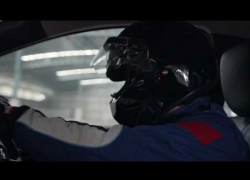History teaches us that the jeepney that has become an icon of Filipino pop culture traces its roots to the auto calesas of the post war era, as well as the Willys MB Jeep. Using whatever platform was available at the time, the old American jeeps used by GIs were pretty much the most viable resource for what would essentially be a passenger- and cargo-friendly conveyance.
The jeepney, as many know, has a long hood, two small side doors, and a rear entrance that leads to a space with side-facing benches. This design, most traditionalists will say, is the best option for taking in more passengers.
But as time went by, so did the layout. Groups such as the Automotive Body Makers Association of the Philippines, Truck Manufacturers Association, and the Philippine Parts Maker Association, have proposed a more modern configuration that meets standards set by the Bureau of Product Standards. All these fall under the Department of Transportation’s Jeepney Modernization Program.
The modern Public Utility Vehicle utilizes a cab over chassis, as well as a lengthened rear end. This means there is no hood, dedicating most of the vehicle’s length to passenger space. There is also a side entrance, as well as an emergency exit on some models. Plus, the vehicle will have a taller ceiling height, PWD-friendly provisions, front- and side-facing seats, and handrails inside. Moreover, it will use an automated fare collection system.
Sure, the modern PUV is different from what many of us know a jeepney to be. It is even different from the jeepney’s various iterations in places like Luzon (where it is longer) or other parts of the country, where it uses a passenger car’s front end just to add a bit of “style”.
But its proponents argue that such a design has its tangible benefits. The cab over chassis layout means more passenger space. This translates to added income for the driver and operator. The side entrance facing the curbside, on the other hand, makes it safer for passengers when entering or alighting from the vehicle. And yes, the automated fare collection system ensures that only the exact amount will be paid each time. Plus, passengers need not fish for loose change.
Thanks to the efforts of manufacturers such as Hino, Fuso, Hyundai, Tata, and Isuzu, these modern PUVs will have new components such as Euro-4 compliant diesel engines, along with brand new mechanicals. This naturally means safer journeys for all, not to mention lower maintenance and running costs.
Yes, the jeepney is about to take a leap into the modern age. Let’s hope, however, that the drivers will also gain some manners while behind the wheel. Just saying.



